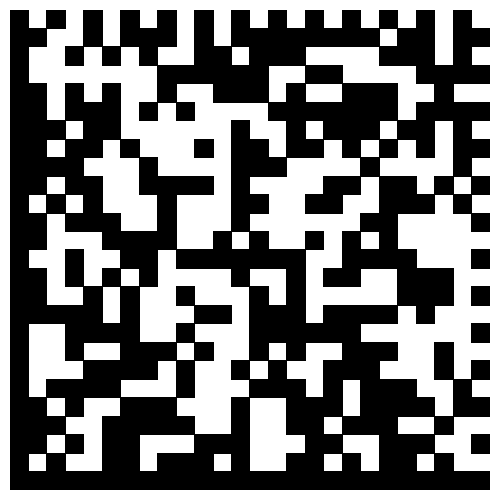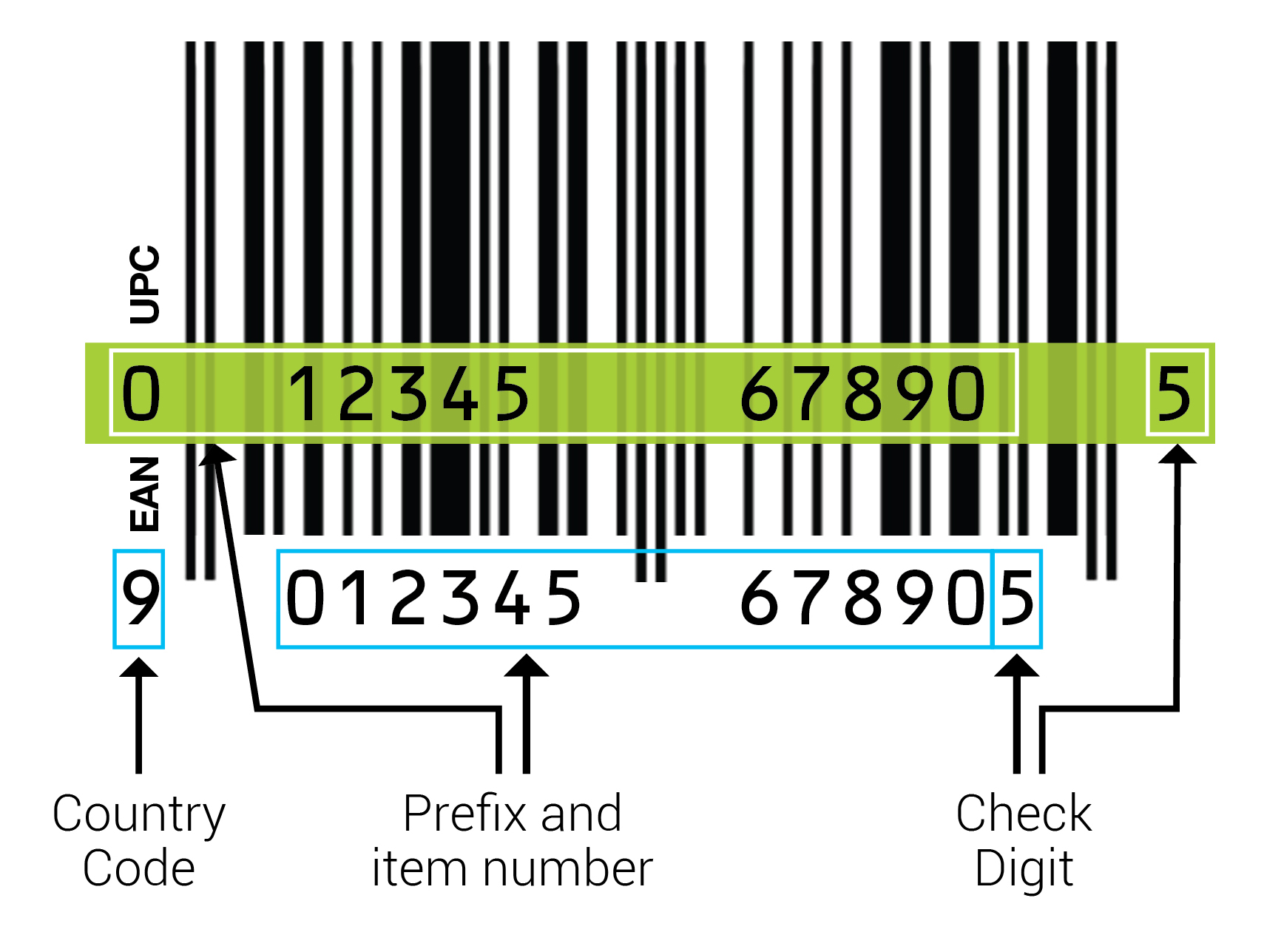Compare the differences between 1D and 2D barcodes.
1D codes are the barcodes that most food and beverage suppliers rely on to identify products at retail POS, e.g. EAN-13 barcode. They are also known as linear barcodes.
2D barcodes differ from traditional 1D barcodes with a smaller design and ability to hold a greater amount of information.
| 1D Barcode EAN-13 | 2D Barcodes GS1 DataMatrix | |
|---|---|---|
| Design | A series of vertical lines – the thickness and distance between lines determines a specific code tied to that product. Requires a Quiet Zone (white space around the barcode) for scanning. |
Square or rectangular design made up of small squares. Requires a Quiet Zone for scanning. |
| Size | Standard size (100%) is 38mm wide x 25mm high | Smaller than 1D codes - Depending on the amount of data embedded, the square symbol can be as small as 10 x 10 modules and as big as 144 x 144. |
| Data capacity | Encodes a GTIN-13, made up of your company prefix, item reference and check digit at the end Does not support attributes, e.g. use-by date |
Up to 2335 alphanumeric characters or 3116 numbers (in squareform) |
| Type of data | Encodes a GTIN-13 Does not support attributes, e.g. use-by date |
Batch and serial numbers, best before or use-by dates, variable quantities, and more. |
| Regulated | Regulated by the GS1 global standards body | Regulated by the GS1 global standards body |
| Scanned by | Omnidirectional scanners | Optical (camera-based) scanners |


Not yet! Not every industry or product requires 2D barcodes. If there is no need to add additional machine-readable data (such as expiry date or batch/lot number) to product packaging, switching from 1D to 2D barcodes is not needed.
At present, there is still a substantial proportion of linear scanners in use in retail– though optical scanners are becoming more common. Until POS systems are updated to be able to scan 2D barcodes, both the 1D and 2D barcodes will be needed.
This will ensure that products can be scanned by retailers who have already upgraded their hardware and software as well as retailers who have not.